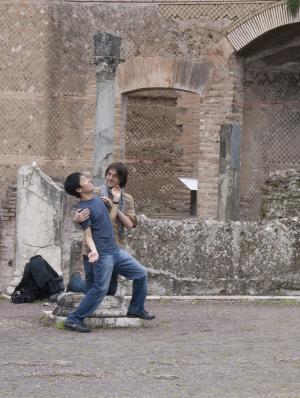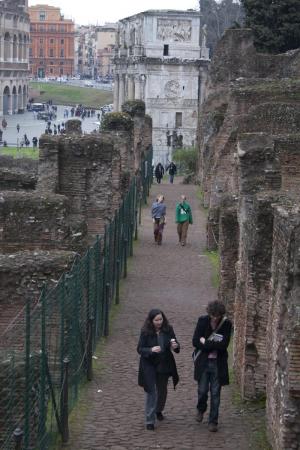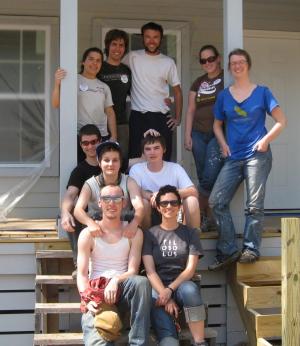Students lay siege to Rome

“The ruins of Rome can be hard to comprehend secondhand,” said classics fellow William Guast, who taught a class this spring semester called Rethinking Rome: Power, Society and Faith in the Roman Empire. “Many sites are too large or too complex for their layout, function or impact to be fully comprehended in printed form.” In March, William’s class had a chance to experience Roman history firsthand, through the art, architecture and archaeology of the city of Rome itself and other sites nearby.
“I experienced the actual scope of history,” said Sam King ’12, one of the nine students who participated and who is designing a Plan of Concentration on utopias. “Reading about Trajan’s Column, you don’t realize how big it is. That’s big in a symbolic sense, ancient and powerful and so on, but also very, very tall and hard to read. I was constantly in awe.”
William’s class considered how the Roman emperors tried to control their image through art and architecture, from the palaces they had built for themselves to the baths and amphitheaters with which they hoped to entertain the masses. Some of the highlights of their trip included the Colosseum (of course), the huge baths of Caracalla and a day trip to the Roman port town of Ostia to learn about the lives of the urban poor.
“A particular and unexpected highlight was the church of San Clemente, built on top of an early Christian basilica, which was itself built on top of a first-century temple to the god Mithras and an apartment block,” said William. The students were intrigued by the radically unfamiliar Roman religious system, visiting the great pagan temples such as the Pantheon, the dark catacombs where Christians and Jews were laid to rest and the monumental churches that heralded the final triumph of Christianity. “Another favorite was Rome’s cat sanctuary, situated in the ruins of four Roman temples.”

“All the different landmarks that we read about in our Roman history readings were now tangible and accessible,” said Paul Lee ’14, who is interested in history and, now, learning Italian. “We got to visit so many historic sites that came alive in a way they couldn’t by simply looking at pictures or reading about them.”
Students were asked to analyze these monuments and sites in person, as ancient Romans would have experienced them. As they moved about the city, they explored the relationship of one monument to another, such as Trajan’s “triad” of interrelated monuments—his forum, his column and his markets—or the emperors’ successive attempts to outdo one another in monuments on the Campus Martius.
“We’ve been discussing Roman town planning in class, and it was great to be able to say ‘in towns like Ostia, or Pompeii’ and know that the students had firsthand experience of what we were talking about,” said William. “When we came to Roman religion, it was great to be able to refer to ‘early Christian art’ and know that the students had seen countless examples in Rome’s museums.”
 Meanwhile, during one of the longest winters in recent memory, a different group of Marlboro students visited springtime during Spring Break, traveling to South Carolina to do community service work with Habitat for Humanity. Pictured left to right are (top row) Hannah Ruth Brothers ’13, Casey Friedman ’12, Jonathan Wood ’12, counseling intern Allison Fisette, Emily Field ’11, (middle row) Randy Morantes ’14, Shyloh Favreau ’13, David Amato ’13, (front row) Nick Rouke ’12 and Clare Hipschman, student life coordinator.
Meanwhile, during one of the longest winters in recent memory, a different group of Marlboro students visited springtime during Spring Break, traveling to South Carolina to do community service work with Habitat for Humanity. Pictured left to right are (top row) Hannah Ruth Brothers ’13, Casey Friedman ’12, Jonathan Wood ’12, counseling intern Allison Fisette, Emily Field ’11, (middle row) Randy Morantes ’14, Shyloh Favreau ’13, David Amato ’13, (front row) Nick Rouke ’12 and Clare Hipschman, student life coordinator.